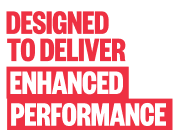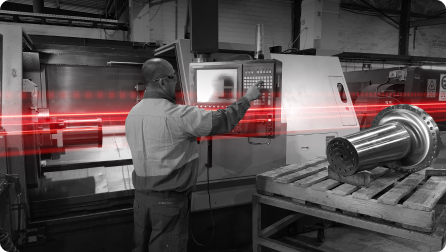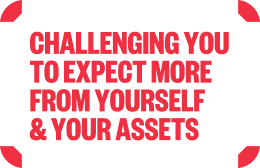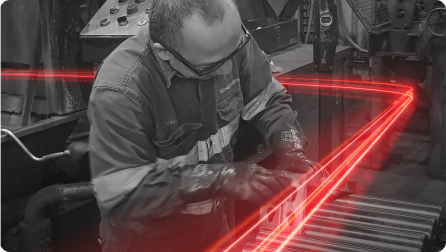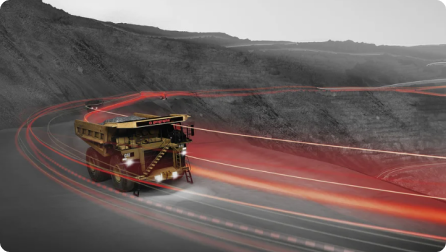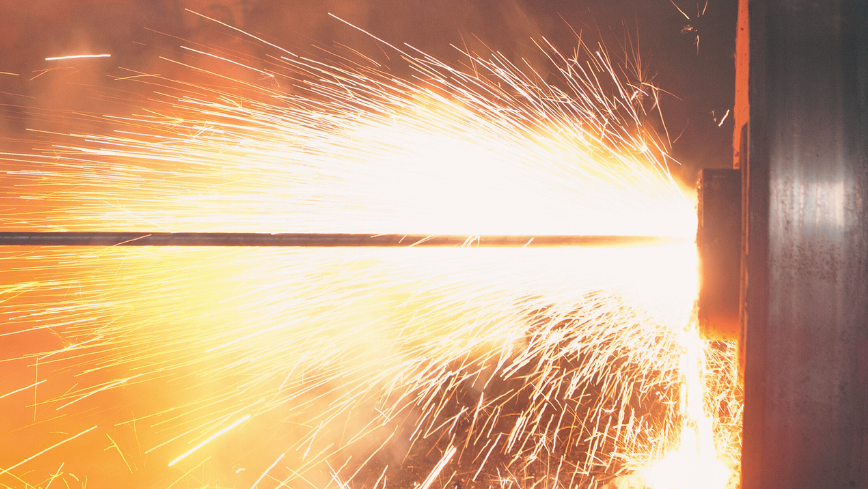
Thermal lancing is a widely used technique in steel, construction, and mining operations to remove worn or seized components in earthmoving equipment. However, this practice comes with inherent risks that can jeopardise worker safety.
Geographe has been working collaboratively with tier 1, tier 2 and off-site repairers and often comes across the negative impacts of the use of hot works in maintenance and operations in mine sites around the world.
In this blog, we’ll talk about the possible hazards linked to thermal lancing and the importance of finding alternative methods that prioritise mine site safety, along with some of Geographe’s solutions to safety practices.
Potential Hazards
When it comes to thermal lancing, there are several potential hazards that need to be carefully considered as they can pose risks to both workers and the environment if not properly addressed. Understanding and mitigating these risks is crucial for ensuring the safety and well-being of everyone involved:
- Heat-Related Challenges: the intense heat generated during thermal lancing can significantly alter the properties of surrounding materials, potentially compromising their structural integrity. Weakened metals may become more prone to instability or failure in the future.
- Environmental Concerns: thermal lancing relies on the combustion of oxygen and iron rods, leading to the release of emissions and pollutants. Without proper ventilation and emission control measures, the mining environment's air quality can be adversely affected by gases and particulate matter.
- Noise Pollution: thermal lancing produces high levels of noise due to the intense heat and combustion process involved. Prolonged exposure to this noise can cause permanent damage to the hearing health of workers.
- Respiratory Risks: the inhalation of fumes and particulate matter produced during thermal lancing can contribute to lung damage or trigger asthma. Workers exposed to these hazardous byproducts face potential long-term health risks.
- Fire Hazards: the use of open flames and high temperatures in thermal lancing poses a significant fire risk, particularly in mining environments where flammable materials or gases may be present.
Solutions to Safer Maintenance
According to the New South Wales Resources Regulators (2019), the best approach to mitigate the risks associated with thermal lancing is to avoid its use altogether. In response to concerns raised by multiple customers, Geographe has collaborated with our clients to develop safer alternatives, prioritising the well-being of workers and the environment. Our engineering and product departments are constantly seeking solutions to assist clients with safety practices through Enhanced Performance (EP™) Parts.
Here are some of the solutions we’ve developed to fit heavy machinery of different OEMs to support safe work practices:
EP™ Colleted Pin Assembly
To suit Komatsu & Caterpillar Haul Trucks, the EP™ Colleted Pin Assembly eliminates hot works and thermal lancing from its multi-bolt and invert taper design. By incorporating a tapered collet system, creating a self-wedging effect between the pin and frame bores, the CPA allows for complete ease of installation and removal of the pins, creating a significant reduction in component removal time and thereby a decrease in labour costs.
EP™ Greaseable Hoist Pin
This innovative solution was engineered in collaboration with one of our clients, a global gold miner, that was looking for a solution to resolve the issue of hoist pin seizure on their CAT 793 D and F model Haul Truck fleet. To suit Caterpillar & Komatsu Haul Trucks, the EP™ Greaseable Hoist Pin has lubrication grooves and grease nipples that allow for the part to be lubricated, creating ease of installation and removal, eliminating the need for hot works.
Prioritising Safer Practices in the Mining Industry
The hazards associated with thermal lancing in the mining industry are not to be underestimated. The intense heat, potential environmental damage, noise pollution, respiratory risks, and fire hazards pose significant threats to both workers and the surrounding ecosystem.
Mining companies can benefit from safer alternatives that align with their commitment to worker safety and environmental stewardship. This calls for investment in research, collaboration, and innovation to identify and implement procedures that eliminate or reduce hazardous practices.
By collaborating closely with customers to develop innovative and safer alternatives to thermal lancing, Geographe helps other miners within the industry to take proactive steps to protect the safety and well-being of its workforce.
Be abreast of Enhanced Performance Solutions for Mining Parts
How can we help?
Submit your details below and our team will contact you.
